Issue 67: New legume species highlights 2020
Compiled by Colin Hughes
Six new species of Chamaecrista from the Diamantina Plateau, Brazil
Cota et al.’s (2020) 82-page taxonomic account of the 64 species of Chamaecrista from the campos rupestres of the Diamantina Plateau, Minas Gerais, Brazil, adds six new species. These new species further augment the exceptionally high species diversity and endemicity of Chamaecrista in the campos rupestres and hint that more species remain to be described in this species-rich genus.
Two of these new species, C. howardii and C. rupertiana are named in honour of Howard Irwin and Rupert Barneby, who established the modern classification of subtribe Cassiineae and assembled the last major taxonomic account of the New World species.
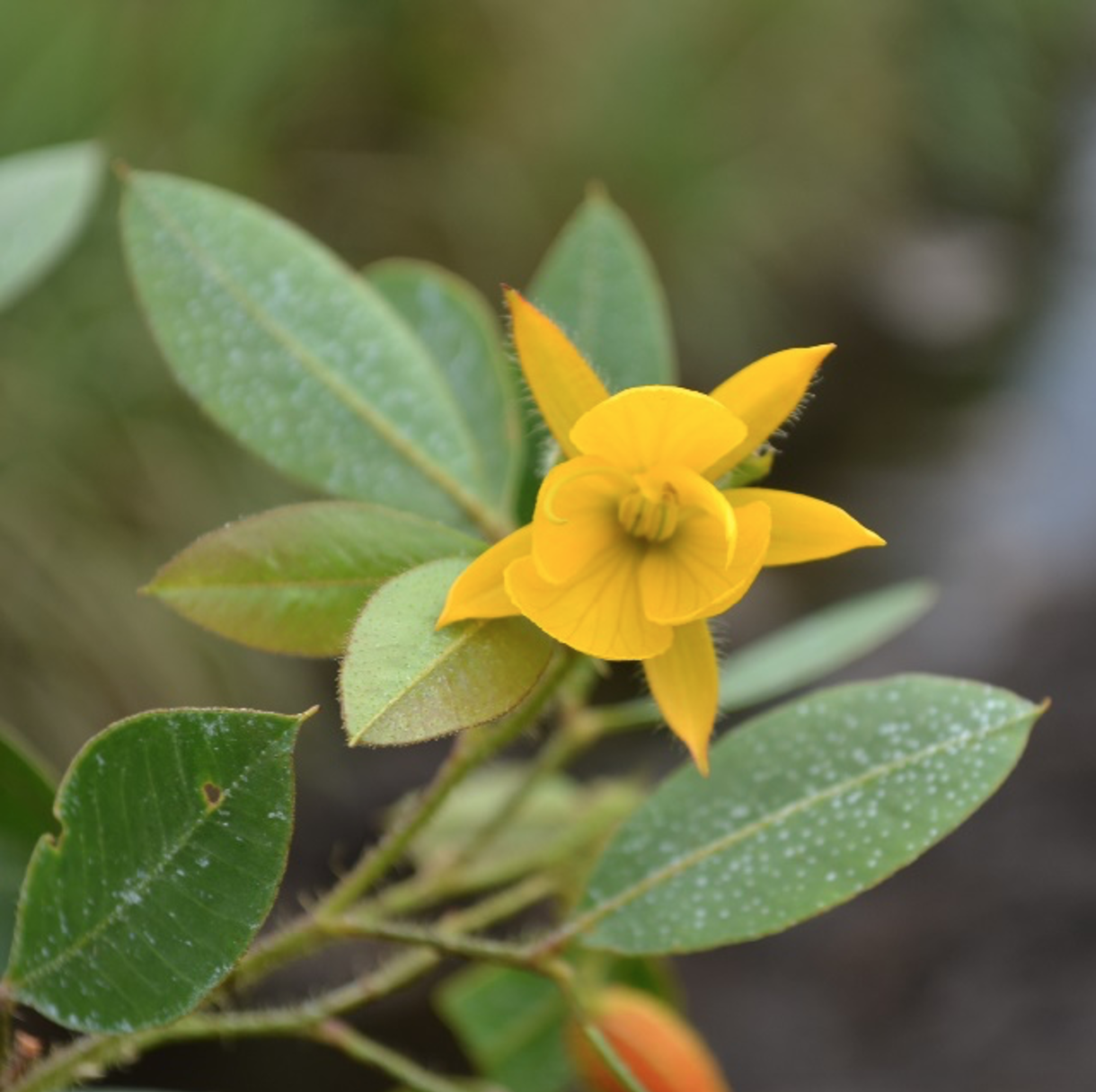
Chamaecrista rupertiana, photo Matheus Martins Teixeira Cota
Cota, M.M.T., Rando, J.G. and Mello-Silva, R. 2020. Chamaecrista (Leguminosae) of the Diamantina Plateau, Minas Gerais, Brazil, with six new species and taxonomic novelties. Phytotaxa 469: 1-82. https://doi.org/10.11646/phytotaxa.469.1.1
Dalea rubriflora – A new red-flowered species from Mexico
This is the first species in the genus Dalea which has permanently ruby red-flowers and is placed in a new Section Rubriflorae. Dalea rubriflora is known from a single collection from the state of Zacatecas in Mexico where it grows in oak forest at 2,590 m elevation.

Dalea rubriflora, photo Julio Martínez Ramírez
Castillón, E.E., Martinez-Ramirez, J., Mares-Guerrero, A.A. and Ocampo, G. 2020. A new outstanding species and a new section of Dalea (Fabaceae: Papilionoideae) from central Mexico. Phytotaxa 454: 145-152. https://doi.org/10.11646/phytotaxa.454.2.6
Two new species of Harpalyce from the Cerrado hotspot in Brazil
In a lavishly and comprehensively illustrated paper by São-Mateus et al, two new species of the poorly-known Papilionoid genus Harpalyce – H. correntina and H. tomb- dorensis are described from the Brazilian Cerrado. The resupinate flowers with the vexillary lip of the calyx strongly cucullate at its apex are characteristic of section Brasilianae, endemic to Brazil.

Harpalyce correntina, photo Edwesley de Moura
São-Mateus, W.M., Simon, M.F., de Queiroz, L.P., Jardim, J.G. and Cardoso, D.B. 2019. Two new species of Harpalyce (Leguminosae, Papilionoideae) from the Cerrado hotspot of biodiversity in Brazil. Kew Bulletin 74: 61. https://doi.org/10.1007/s12225-019-9845-y
Additions in Indigofera
With ca. 750 species, Indigofera is the third-largest legume genus, and as with all large pantropical genera, new species continue to steadily accrue. Here I. centralis is added to a growing tally of recent additions to the genus from Australia. Interestingly, I. centralis was first collected be- tween 1877 and 1889 with a specimen lurking in the Melbourne herbarium and only brought to light based on new material collected 100 years later, vindicating the idea that many undescribed species are already in collections!

Indigofera centralis, photo Dave Albrecht
Wilson, P.G. and Rowe, R. 2020. A new species of Indigofera (Fabaceae: Faboideae) from Central Australia. Telopea 23: 113-117. http://dx.doi.org/10.7751/telopea14402
The diversity of Indigofera in the Sino-Himalayan region with > 100 species is also increasing with description of I. yuanjiangensis.

I. yuanjiangensis, photo Xin-Fen Gao
Zhao, X.L., Jiang, L.S. and Gao, X.F. 2020. Indigofera yuanjiangensis (Fabaceae: Papilionoideae), a new species from Yunnan, China. Phytotaxa 455: 235-239. https://doi.org/10.11646/phytotaxa.455.3.7
Mimosa carolina from the Brazilian Cerrado
Mimosa carolina, endemic to the northern fringes of the Brazilian Cerrado, adds to the formidable diversity of Mimosa species from the Cerrados and Campos Rupestres of Brazil, a major hotspot for the genus with > 200 species. In common with many Mimosa species from the fire-prone Cerrado, M. carolina is a geoxyle, resprouting from a substantial underground lignotuber or xylopodium and forming a large spreading mat of prostrate shoots.
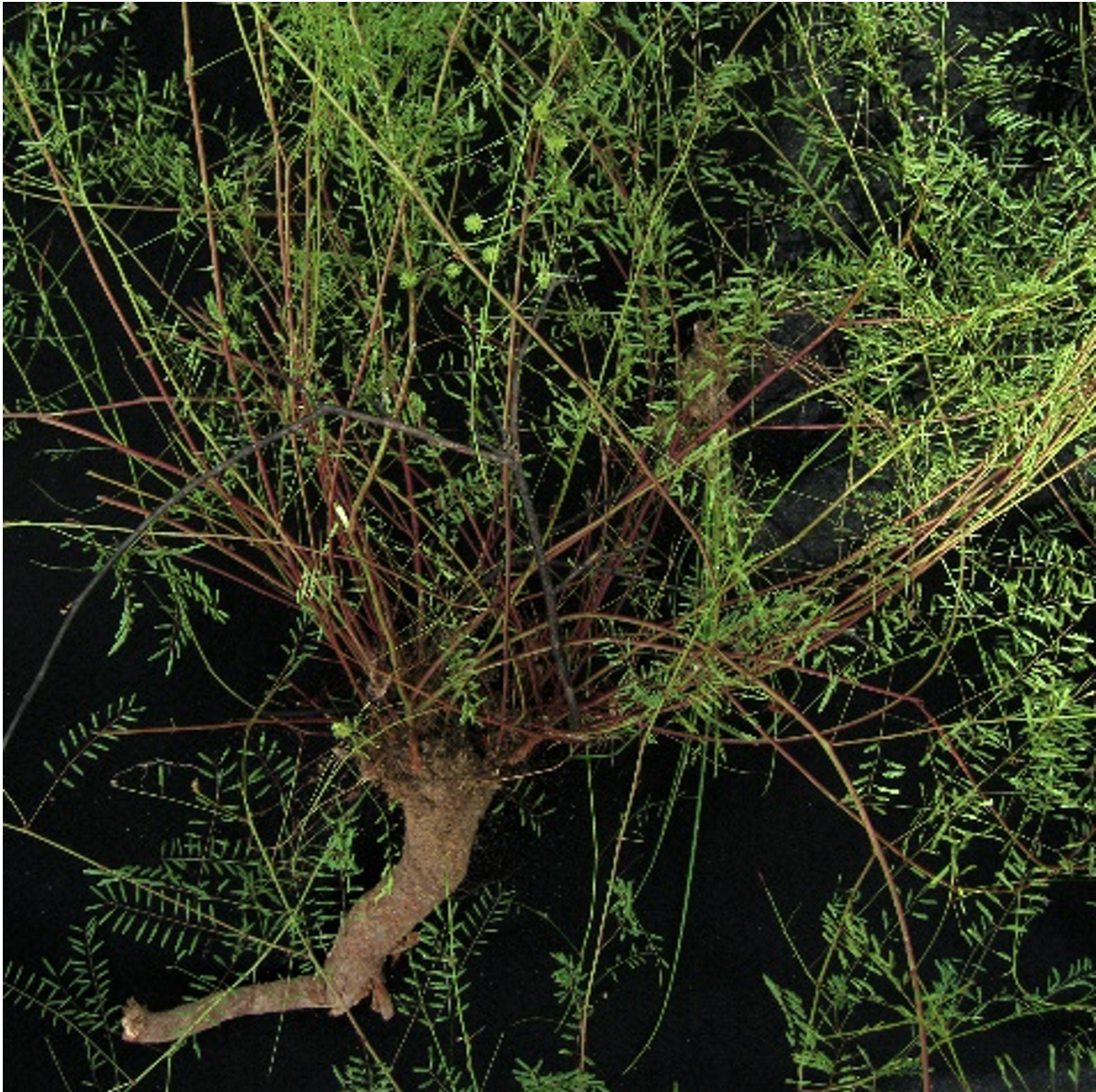
Mimosa carolina, photo Marcelo Simon
Morales, M., Fortunato, R.H. and Simon, M.F. 2020. A new species of Mimosa L. ser. Bipinnatae DC. (Leguminosae) from the Cerrado: Taxonomic and phylogenetic insights. Plants 9: 934. https://doi.org/10.3390/plants9080934
Python vine from Guangxi Province in China: Mucuna guangxiensis
The pantropical/subtropical genus Mucuna has ca. 105 species with around 18 species in China and Japan. The new species described here, Mucuna guangxiensis forms a large woody twining liana (known locally as python vine) with large woody fruits up to 70 cm long and is only known from the type locality in Guangxi Province in China.
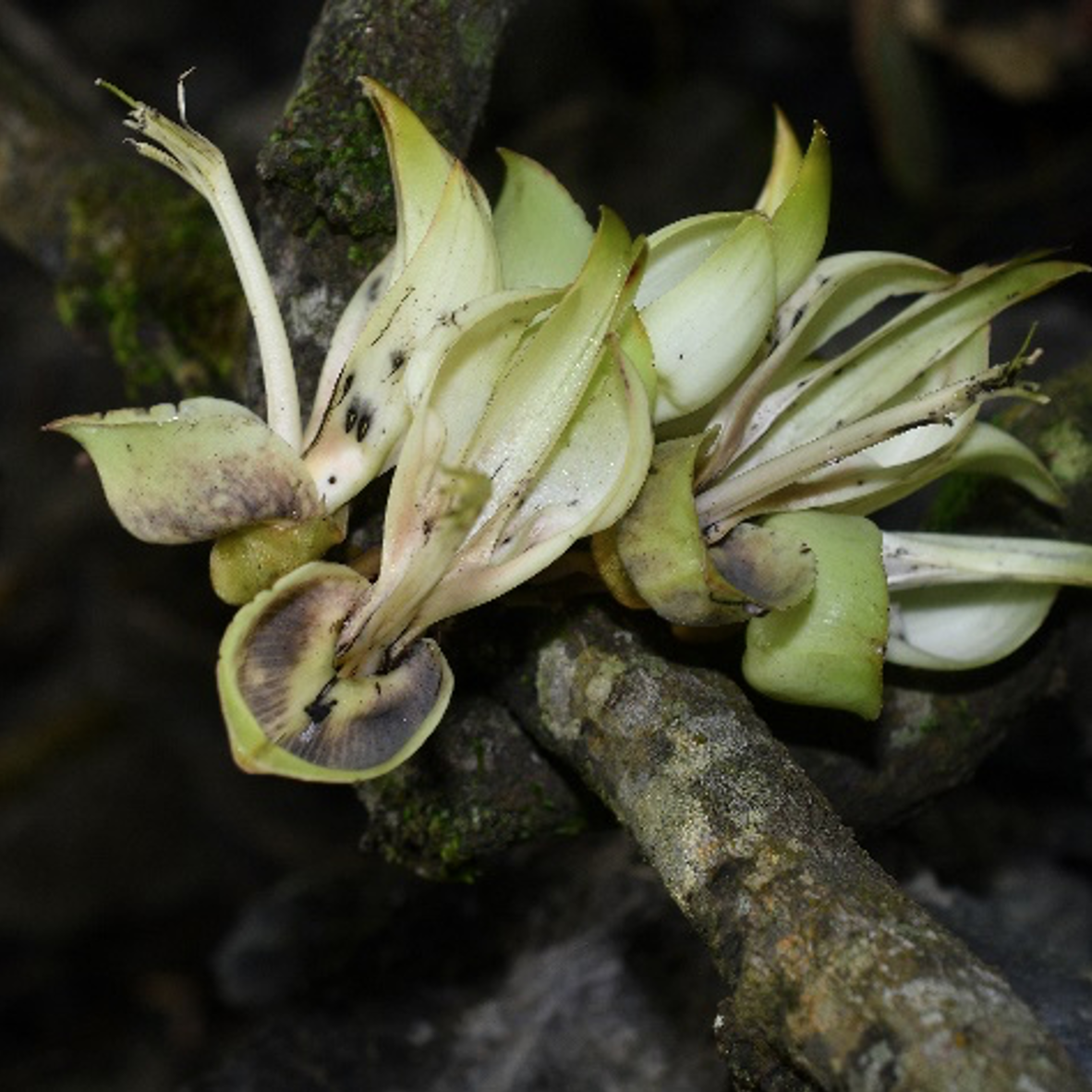
Mucuna guangxiensis, photo Yun-Feng Huang
Jiang, K., Huang, Y. and Moura, T.M. 2020. Mucuna guangxiensis, a new species of Mucuna subg. Macrocarpa (Leguminosae-Papilionoideae) from China. Phytotaxa 433: 145-152. https://doi.org/10.11646/phytotaxa.433.2.5
A new polyploid Neptunia from the Brazilian Caatinga
Santos-Silva et al’s paper describing a new species of Neptunia (Caesalpinioideae: mimosoid clade) is a classical biosystematics study including cytological, anatomical and morphological data. Neptunia windleriana is endemic to Bahia state in Brazil growing in open Caatinga subject to seasonal flooding along the São Francisco River.
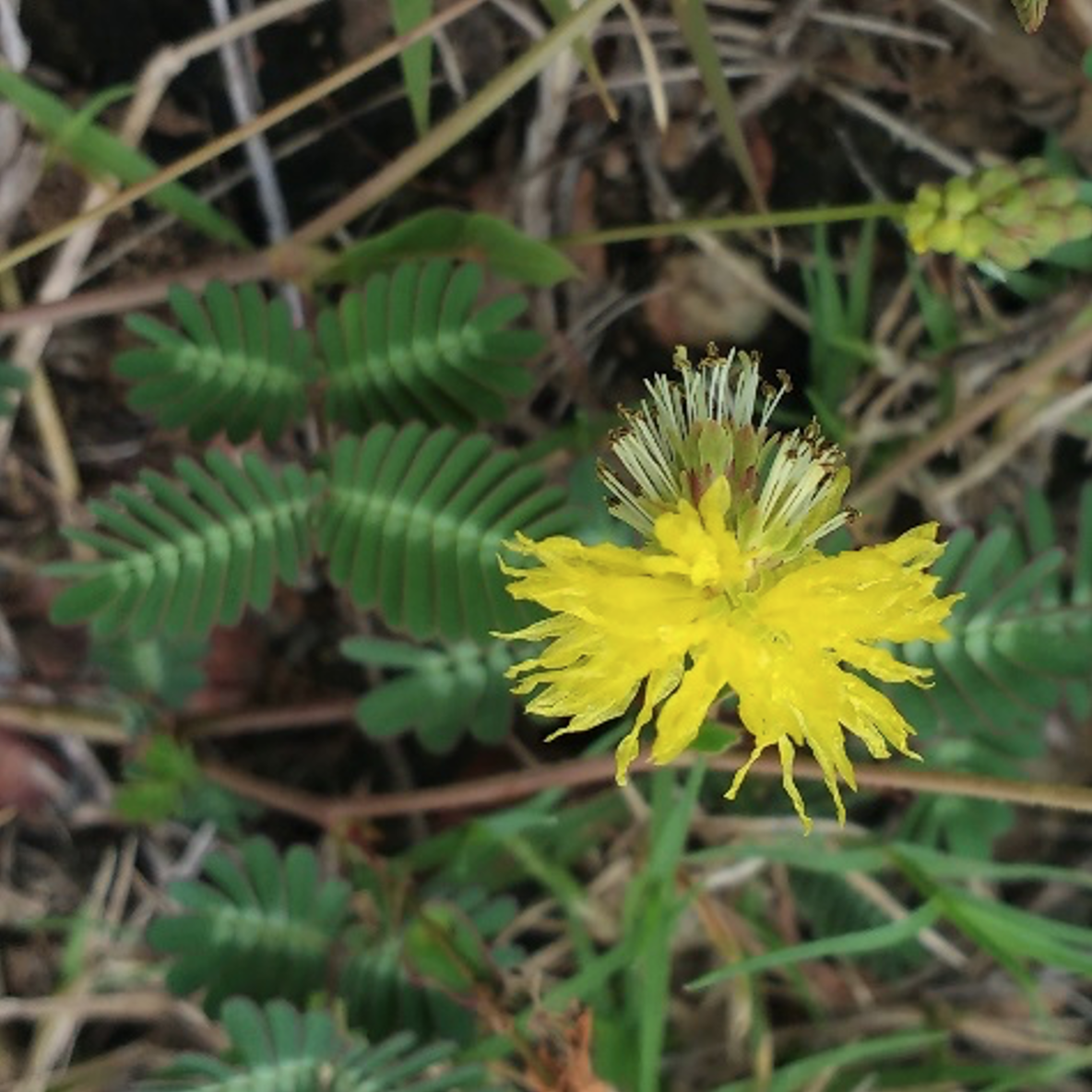
Neptunia windleriana, photo Juliana Santos Silva
Santos-Silva, J.S., Carvalho, M.S., Santos, G.S., Braga, F.T., de Andrade, M.J.G. and de Freitas Mansano, V. 2020. Neptunia windleriana: A new polyploid species of Neptunia (Leguminosae) from Brazil recognized by anatomy, morphology and cytogenetics. Systematic Botany 45: 483-494. https://doi.org/10.1600/036364420X15935294613392
A new wild Phaseolus bean species from Costa Rica
The discovery and description of this new species of Phaseolus from Costa Rica emphasizes that there are still many new species to be described even of wild relatives of important pulse crops like Phaseolus beans. In common with the majority of newly described species, P. albicarminus is a globally rare endemic, known from just three populations on the western flanks of the Talamanca range in Costa Rica.

Phaseolus albicarminus, photo Daniel Debouck
Debouck, D.G., Chaves-Barrantes, N. and Araya-Villalobos, R. 2020. Phaseolus albicarminus (Leguminosae, Phaseoleae), a new wild bean species from the subhumid forests of southern central Costa Rica. Phytotaxa 449: 1-14. https://doi.org/10.11646/phytotaxa.449.1.1
Two new prostrate subshrub Stylosanthes species from Bahia, Brazil
Stylosanthes, with ca. 65 species, is a notoriously difficult genus taxonomically and it is encouraging that new taxonomic work on the genus is underway in Brazil, where the majority of the species occur. This has resulted in two new species of prostrate subshrubs endemic to the Serra Geral and Chapada Diamantina in Bahia.
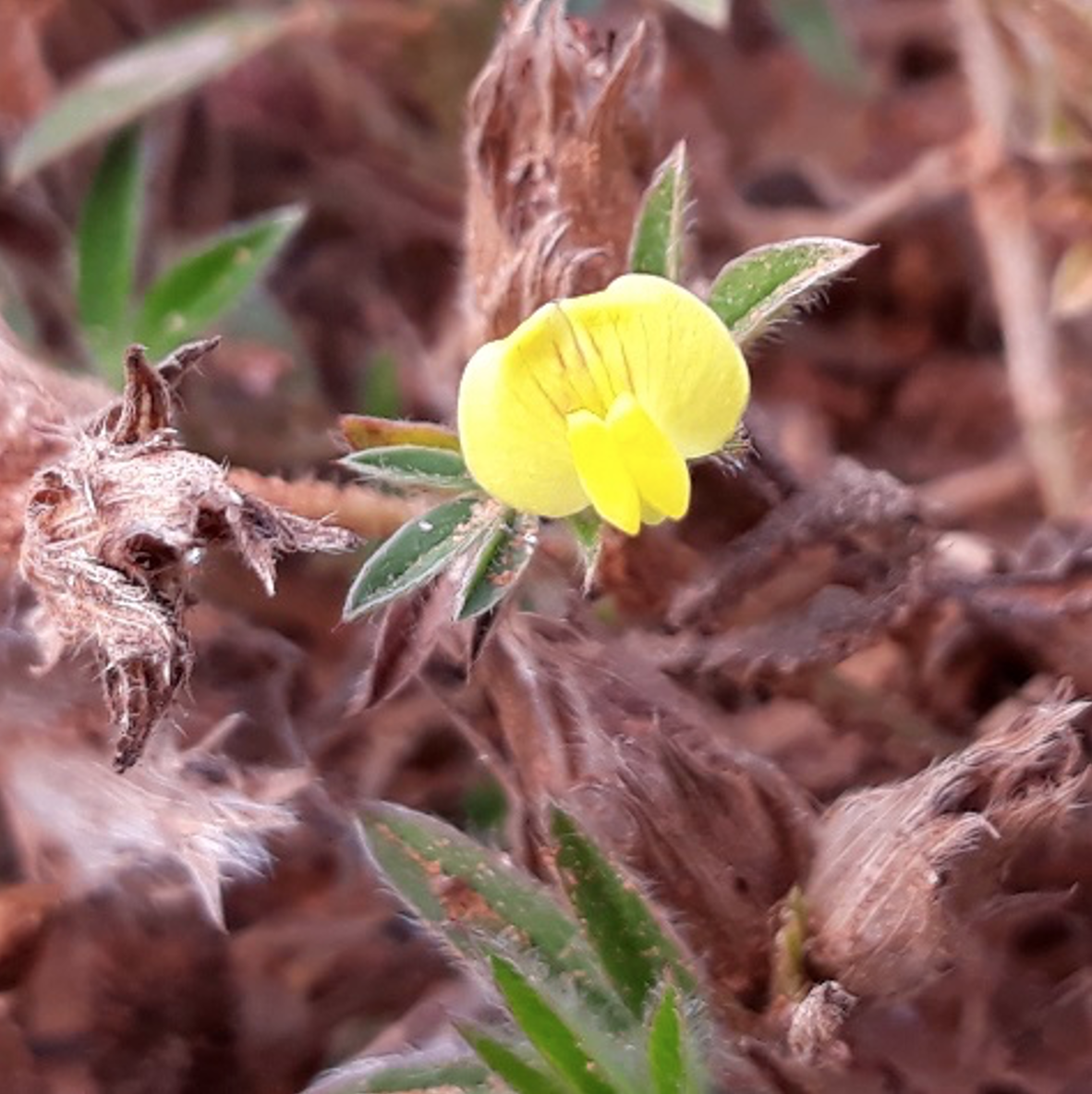
Stylosanthes minima, photo Jamile Jorge Ferreira
Ferreira, J.J.D.S., Gissi, D.S., Perez, A.P.F. and Silva, J.S. 2020. Two new species of Stylosanthes Sw. (Leguminosae—Papilionoideae) endemic to Bahia State, Brazil. Phytotaxa 456: 157-165. https://doi.org/10.11646/phytotaxa.456.2.3
Tachigali inca, a new species from the western Amazon
Tachigali inca, newly described this year by Huamantupa-Chuquimaco et al., is a 40 m tall tree in terra firme forests of the western Amazon of Brazil, Peru and Bolivia. It is characterized by unusual large cylindrical slightly ribbed ant domatia immersed in the leaf rachis. The presence of ants with strong formic acid is indicated by the common names Tachi (Brazil) and Tangarana (Peru).

Tachigali inca, photo Isau Huamantupa-Chuqimaco
Huamantupa-Chuquimaco, I., de Lima, H.C. and Cardoso, D.B. 2020. Tachigali inca Caesalpinioideae – Leguminosae, a new species of giant tree from Amazonian forests. Webbia 75: 243-250. https://doi.org/10.36253/jopt-9604
A treasure trove of new Tephrosia species from Australia
The epithet of the distinctive new species T. cardiophylla from the Kimberley sandstones of north-west Australia, is derived from the Greek kardia (heart) and –phyllus (-leaved) in reference to the emarginate apex of the heart- shaped terminal leaflets. Ryonen Butcher reports that she is in the process of describing 35 new Tephrosia taxa, mainly from western Australia and the Northern Territory, so there are many more species to come soon.
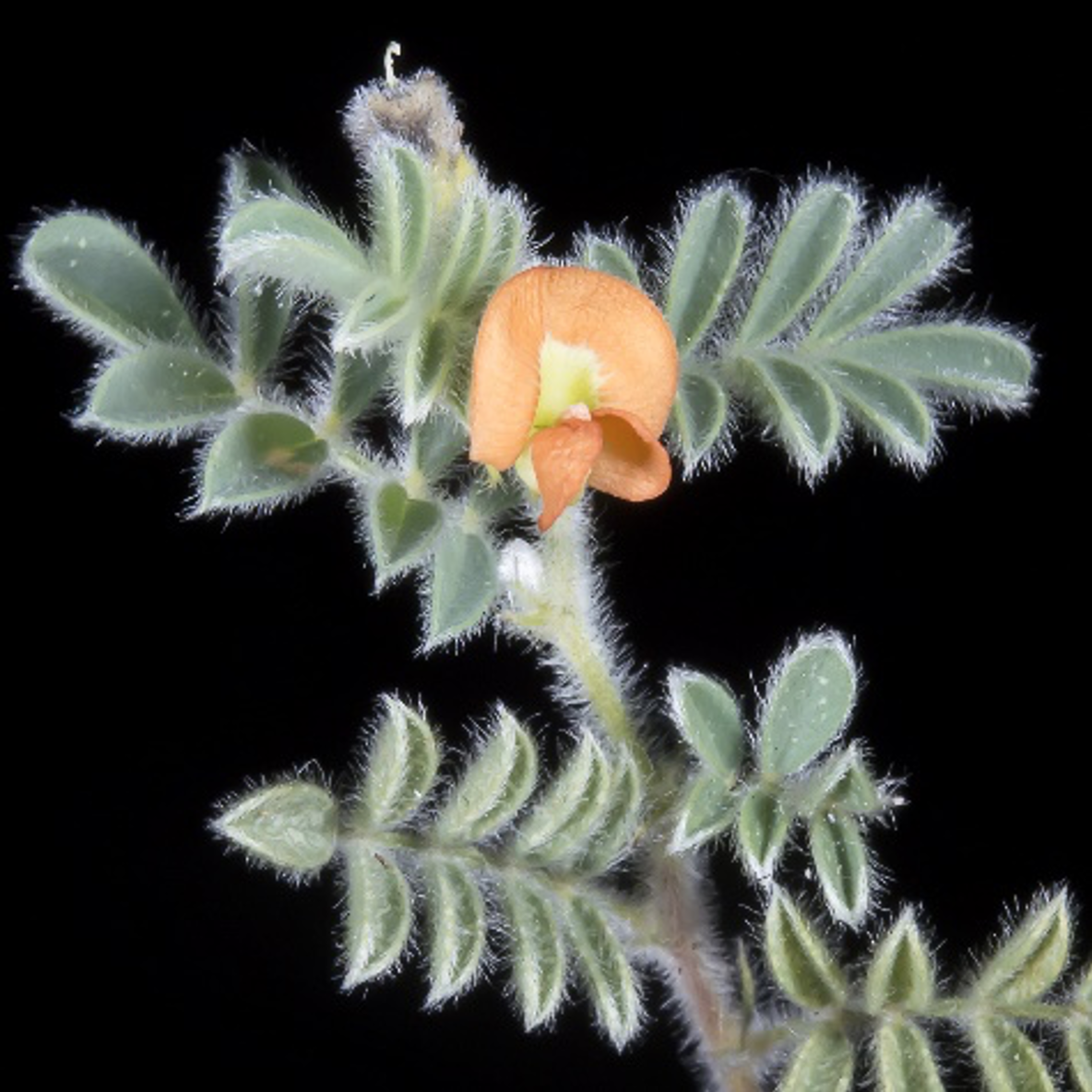
Tephrosia cardiophylla, photo Kevin Thiele
Butcher, R. 2017. Tephrosia cardiophylla (Fabaceae: Millettieae), a distinctive, new, conservation-listed species from Western Australia’s Kimberley sandstones. Nuytsia 31: 47-51. https://florabase.dpaw.wa.gov.au/science/nuytsia/944.pdf
A total of the 36 new legume species described in 2020 is presented in the Bibliography.